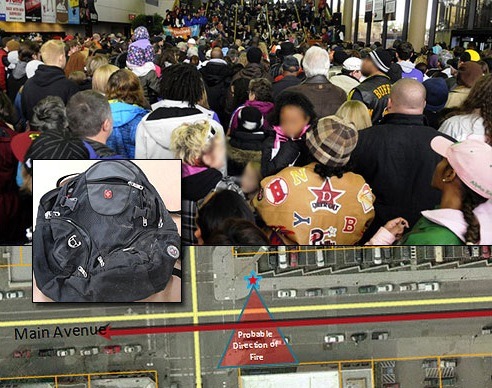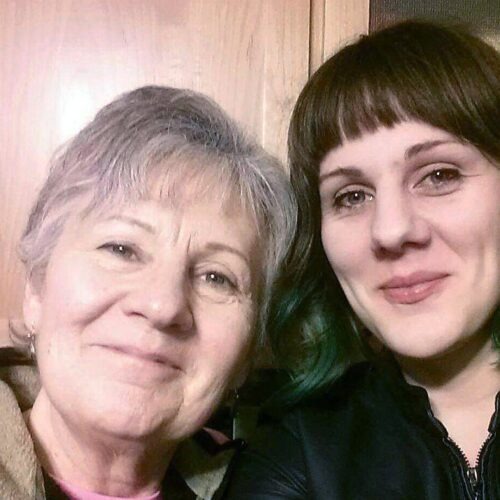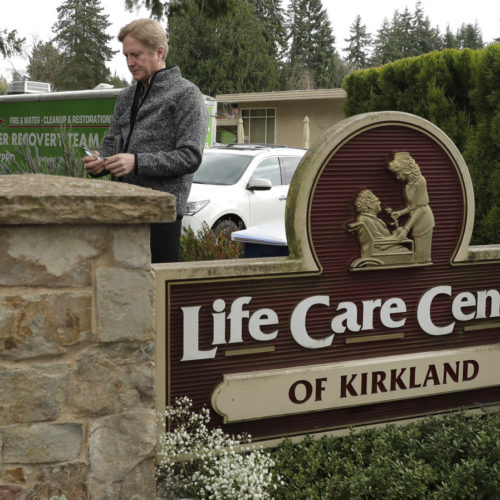
10 Years After White Supremacist Tried To Bomb Spokane’s MLK Parade, Extremism Is More Mainstream
Listen
This week marks 10 years since a white supremacist attempted to bomb the Martin Luther King Junior Day parade through downtown Spokane. The bomb was discovered and defused just in the nick of time.
But the effects of extremist ideologies in the region live on.
Journalist Leah Sottile examined that in the podcast “Bundyville” from Oregon Public Broadcasting and Longreads.
With the Jan. 6, 2021, insurrection at the U.S. Capitol, and the 10-year anniversary of the attempted bombing in Spokane, NWPB revisited some of those past conversations to remember how they’re still relevant now.
WATCH: Reviewing Anti-Government Extremism With ‘Bundyille’ Podcast Host Leah Sottile
(Story continues below video)
“But with this (second) season, we really kind of unpack this idea that extremist ideologies are being repeated by mainstream politicians, by local politicians, all the way up to the federal government,” Sottile told NWPB’s Uniquely NW News in August 2019. “So what does it mean when all of a sudden the anti-government movement is a part of the government? That’s where we go with this season is trying to understand what changes when extremist ideologies become slightly more mainstream.”
We spoke with her again in June 2020 about the podcast and how the anti-government movement and groups like the Proud Boys and antifa were becoming more prominent and well known during protests for racial justice.
Watch or listen to the full episode above. See more from NWPB’s Uniquely NW News and all NWPB videos on YouTube.
CONVERSATION HIGHLIGHTS:
(Edited for length and clarity)
On the idea of something “big” coming in the anti-government movement in 2019, but not necessarily a bombing like Oklahoma City or occupation like of the Malheur National Wildlife Refuge in 2016:
At the end of the first season we sort of take the listener to a place where there could be potential for another standoff with the government. Because that’s what the Patriot movement is always looking for, sort of other ways to fight with the government or to egg them on, and to continue this kind of continual cycle of tit for tat between the government and the anti-government movement. But with this season, we really kind of unpack this idea that extremist ideologies are being repeated by mainstream politicians, by local politicians, all the way up to the federal government. So what does it mean when all of a sudden the anti-government movement is a part of the government? You’re right, that’s where we go with the season is trying to understand what changes when extremist ideologies become slightly more mainstream.
On the idea that white supremacist groups in the Inland Northwest never really left after the bankruptcy of the Aryan Nation in North Idaho, and were just less visible in their approach:
In the podcast we give the example of when I still lived in Spokane in 2011, a white supremacist from Stevens County placed a bomb that could have killed and injured tons of people on the parade route of the Martin Luther King Jr. parade. So that person was directly connected with white supremacist groups, had white supremacist ideologies. So that was one example. But I think that one of the biggest takeaways that I would hope people see from this season, from the story and the podcast, is that white supremacy doesn’t look the same that it always has. You can’t sort of flatten who white supremacists are and say, “Well, they always, you know, have swastika flags, and they always have KKK hoods on and burning crosses.” I think that is a really reductive way of looking at racists and white supremacists. And so you have to look at ideology to see how the ideologies of Richard Butler and the Aryan Nations live on through other institutions and people in the Northwest.
On the rise of groups like Antifa during 2020 and the protests for racial justice to be more well known and in the news and on the lips of politicians, and what the group represents:
Antifa is, like you said, it’s just shorthand for anti-fascist. I think there’s a lot of misconceptions around what people who are Antifa or anti-fascist are. And a lot of that comes from in the past four years we’ve seen tons of protests happening in places like Portland, where I live, where Antifa is sort of rumbling in the streets with Proud Boys and these sort of far right people. What I’ve come to learn in covering those things is that Antifa can take all sorts of shades of look and feel. Anybody who’s opposed to fascism is anti-fascist. And a lot of times people think that Antifa are these people dressed in all black with a black face mask and black clothing and busting up windows and getting into fights. In some interviews that I have done with anti-fascist groups, they talk about that is called black bloc. That’s the term for that style of clothing. Black bloc is just one percentage of the anti-fascist movement, and that is used as a tactic by anti-fascists to protect normal everyday anti-fascist protesters. So that’s how it’s framed. I think that in the media there’s been a lot of portrayal of these people getting in fights and things like that. I think that really, it is just sort of this kind of very small group that is committing violence. But that’s what’s being picked up on to sort of propagate these rumors that these vans full of Antifa are coming to your town to destroy things which have been wholeheartedly disproven.
On other groups like the Proud Boys and Three Percenters and Boogaloo and what they stand for:
The Proud Boys are one that you hear a lot of people kind of group these people together as all Proud Boys. Proud Boys, generally they’re neo-fascist, it’s an all-male organization. They perceive anything that’s politically correct or that expresses some sort of white guilt as something that they want to fight against. And quite literally fight against. So like in Portland, in the last four years, we’ve seen lots of these Proud Boy groups coming to town to just sort of oppose this rampant liberalism. Three Percenters and militia groups, they are similar but different. They have anti-government ideologies. This name Three Percent is conspiracy theory that people who belong to the group believe in. They believe that it only took 3% of American colonists to fight off the British during the American Revolution, which is wholeheartedly disproven. Both groups I think are often called white nationalist groups. But that is pretty reductive, in that there are many people of color that are Proud Boys, many people of color who are Three Percenters. However, they sort of stand on ideas that, again, are like rebranded ideas that come from white nationalist movements or Neo Nazi talking points and things like that. Boogaloo Boys, as they’re often called, are people who want to see chaos happen, who would like to see a civil war. So, whereas Proud Boys and Three Percenters might be the sorts of people who would like, you know, the Proud Boys aggressively want to push this male-centric society. Three Percenters are saying, “We’re gonna be ready when something happens in society that is some big cataclysm.” Boogaloo Boys would like to incite that. So we’ve seen over the last week several instances of Boogaloo Boys showing up at either a Black Lives Matter protest or getting into confrontations with police officers and killing police officers in some instances, as a way of trying to just sort of wreak havoc and chaos. And the end game there is really a sort of like nihilism instead of like a re-founding of society.
On the approach to policing and Blue Lives Matter from people like Ammon Bundy, who has had his own very outspoken issues and confrontations with police at the local, state and federal levels:
I’ve looked at some of the things that Ammon Bundy has been talking about on his social media, and he’s absolutely seeing this as a moment that he can say, “Yeah, I agree. I think that the police have way too much power. Look at the amount of force they brought on us at Bundy Ranch.” They often point to the 2016 Malheur occupation and the death of LaVoy Finicum as another instance of police force overreach. It’s a little bit opportunistic, I think, to capitalize on this moment, but you know, the Bundys are nothing but opportunists in a lot of my reporting. So I think that is one distinction. But however, if you look at the long history of the Patriot Movement and a lot of people who’ve adhered to this, you’ve got under that umbrella of the Patriot Movement, sovereign citizens, who are people who very actively oppose police and any kind of law enforcement. And there are multiple, multiple times in history that they have gotten into large shootouts with police officers for very simple things like a driver’s license or a license plate. So within the Patriot Movement, it’s hard to cast it with a broad brush because there are people who are very pro-law enforcement, pro-Trump, things like that. Ammon Bundy is not those things. So this is just to say there’s a lot of nuance in it.
Related Stories:

Yakima Journalist Who Lost Her Mom To COVID: Don’t Let Gatherings This Season Take Yours
Emily McCarty is a Yakima-based reporter for Crosscut/KCTS. Her mom, Mary, died in a Spokane hospital in November, four days after being diagnosed with COVID-19. McCarty wrote about her mom and her family’s personal experience in an essay titled “I lost my mom to COVID-19. Don’t let the holidays steal yours.”

COVID First Hit Long-Term Care In Puget Sound Region. Now It’s Hitting Home In Rural Areas
Some of the hardest hit places have been long-term care facilities in rural areas like Tonasket in Okanogan County, and in central Washington. At least three care facilities in Grant County have reported outbreaks and deaths since a large wedding near Ritzville last month attended by some care facility staff who later tested positive for COVID-19. But a definitive connection between those outbreaks and the wedding remains unclear.

Much More Than A Spotted Owl Fight: Northwest ‘Timber Wars’ Of 30 Years Ago Revisited In Podcast
Here’s a quick game: When you hear, “spotted owl,” what do you think of? If you were in the Northwest in the 1980s and 1990s, you may think of logging and a fight over endangered species versus jobs and lumber towns surviving. But there’s much more background in that fight than you may remember.















